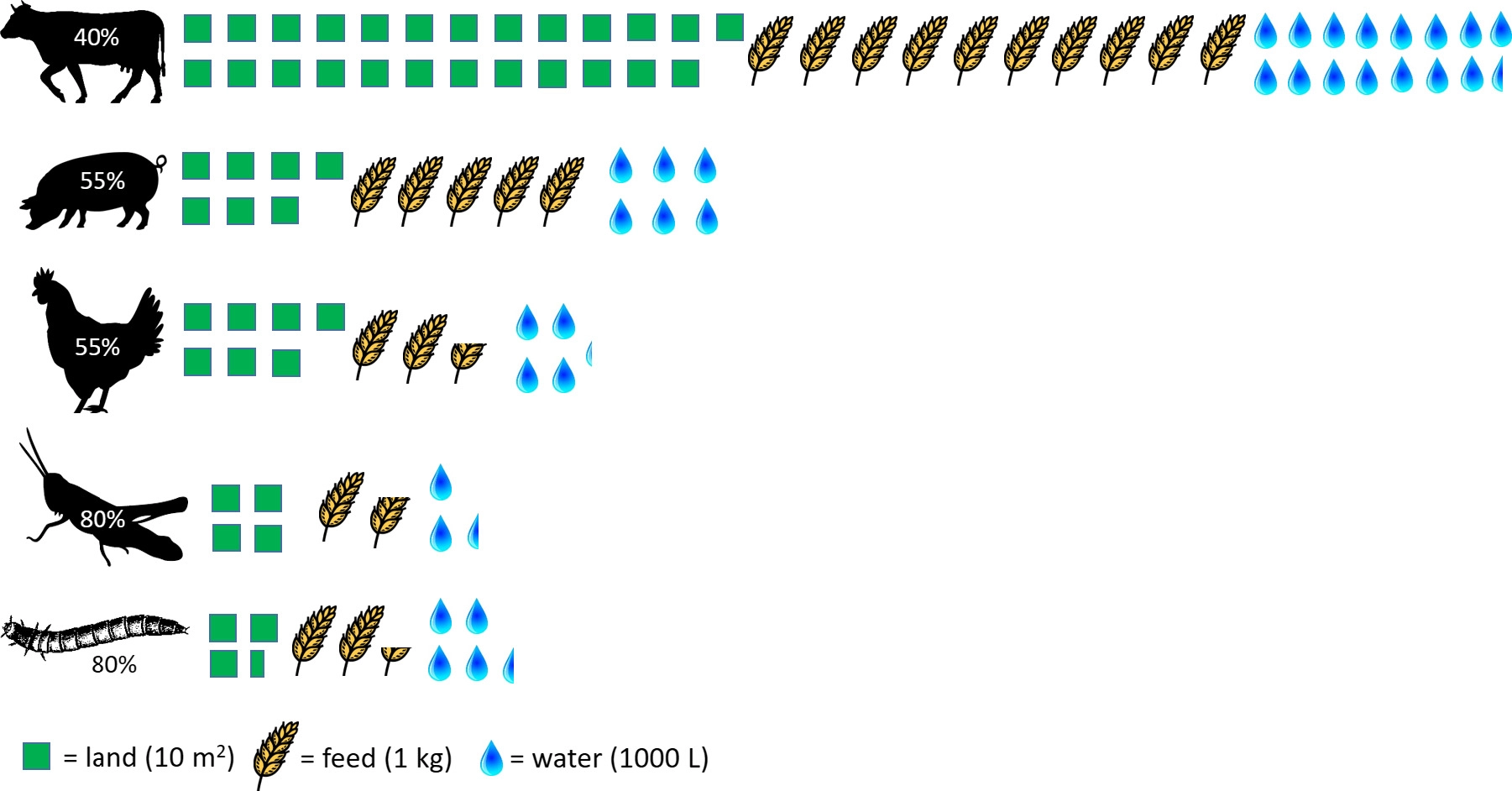Why are insects considered sustainable? A Protein production inputs resource justification

Everything comes down to the cost of inputs vs the benefits obtained from the outputs. Farm animals require feed and water, That feed is grown or developed in fields. Farm animals also release green-house gasses. Those gasses pollute the environment.
We also evaluate the benefits of those animals based on the food we obtain from, mostly, their slaughter. Or in the case of dairy or egg-layers, those respective products.
So, in simple terms, we compare the inputs vs outputs in a sample of farm animals vs commonly “farmed” insects like black soldier fly (Hermetia illucens), mealworm (Tenebrio molitor), locusts (Locusta migratoria) or crickets (Acheta domesticus).
Evidently, a beef animal would require more land for pastures and consumes a lot more water than any other farmed animal.
There are many ways to look at the economics of animal husbandry. But it is clear that a beef cow consumes the most of everything from water to feed to land required to feed it. Additionally, when one considers the amount of feed conversion to protein efficiency, a beef animal is a poor converter compared to other domestic animals.
Overall, insects require less space, way less feed and water and are environmentally friendly in terms of GHG emissions.
In addition, depending on the insect, the proportion of the whole insect that is edible is anywhere up to twice as much as beef.
So insects tick all the boxes: high feed conversion, faster growth/maturation, very low GHG, low water and space requirements and there are 1900 species that are known to be edible worldwide!
